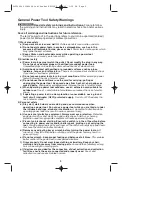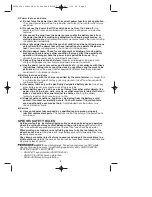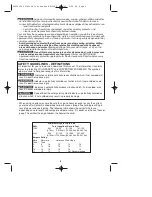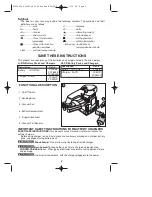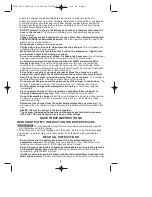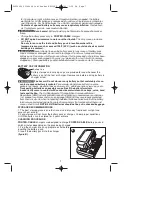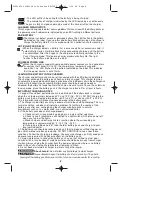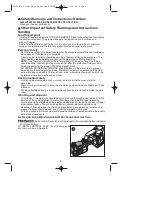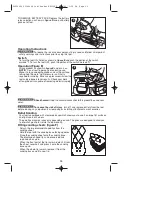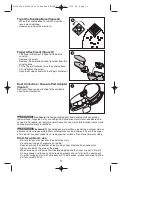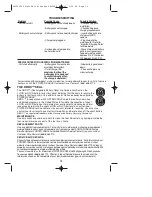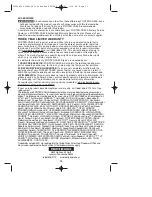
3. The LED will flash indicating that the battery is being charged.
4. The completion of charge is indicated by the LED remaining on continuously.
The pack is fully charged and may be used at this time or left on the charger.
CHARGER DIAGNOSTICS
This charger is designed to detect certain problems that can arise with the battery packs or
the power source. Problems are indicated by one LED flashing in different patterns.
BAD BATTERY
The charger can detect a weak or damaged battery. The LED flashes in the pattern
indicated on the label. If you see this bad battery blink pattern, do not continue to
charge the battery. Return it to a service center or a collection site for recycling.
HOT/COLD PACK DELAY
When the charger detects a battery that is excessively hot or excessively cold, it
automatically starts a Hot/Cold Pack Delay, suspending charging until the battery
has normalized. After this happens, the charger automatically switches to the
Pack Charging mode. This feature ensures maximum battery life. The light
flashes in the pattern indicated on the label.
PROBLEM POWER LINE
When the charger is used with some portable power sources such as generators
or sources that convert DC to AC, the charger may temporarily suspend
operation. The LED flashes in the pattern indicated on the label. This indicates
that the power source is out of limits.
LEAVING THE BATTERY IN THE CHARGER
The charger and battery pack can be left connected with the LED glowing indefinitely.
The charger will keep the battery pack fresh and fully charged. This charger features
an automatic tune-up mode which equals or balances the individual cells in the battery pack
to allow it to function at peak capacity. Battery packs should be tuned up weekly or
whenever the battery no longer delivers the same amount of work. To use the automatic
tune-up mode, place the battery pack in the charger and leave it for at least 8 hours.
IMPORTANT CHARGING NOTES
1. Longest life and best performance can be obtained if the battery pack is charged
when the air temperature is between 65°F and 75°F (18°- 24°C). DO NOT charge the
battery pack in an air temperature below +40°F (+4.5°C), or above +105°F (+40.5°C).
This is important and will prevent serious damage to the battery pack.
2. The charger and battery pack may become warm to touch while charging. This is a
normal condition, and does not indicate a problem. To facilitate the cooling of the
battery pack after use, avoid placing the charger or battery pack in a warm
environment such as in a metal shed, or an uninsulated trailer.
3. If the battery pack does not charge properly:
a. Check current at receptacle by plugging in a lamp or other appliance
b. Check to see if receptacle is connected to a light switch which turns power off
when you turn out the lights.
c. Move charger and battery pack to a location where the surrounding air
temperature is approximately 65°F - 75°F (18°- 24°C).
d. If charging problems persist, take the tool, battery pack and charger to your
local service center.
4. The battery pack should be recharged when it fails to produce sufficient power on
jobs which were easily done previously. DO NOT CONTINUE to use under these
conditions. Follow the charging procedure. You may also charge a partially used pack
whenever you desire with no adverse affect on the battery pack.
5. Foreign materials of a conductive nature such as, but not limited to, steel wool,
aluminum foil, or any buildup of metallic particles should be kept away from charger
cavities. Always unplug the charger from the power supply when there is no battery
pack in the cavity. Unplug charger before attempting to clean.
6. Do not freeze or immerse charger in water or any other liquid.
Shock hazard
. Do not allow any liquid to get inside charger.
Never attempt to open the battery pack for any reason. If the plastic
housing of the battery pack breaks or cracks, return to a service center for recycling.
:
:
8
90550099 PC1800DS Crdl Sander REVISED 4/1/09 1:52 PM Page 8


